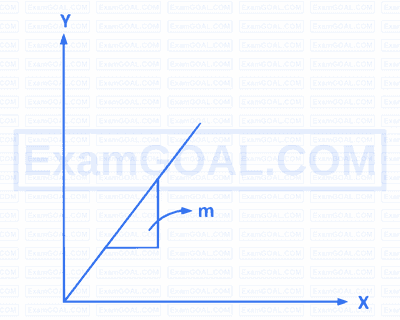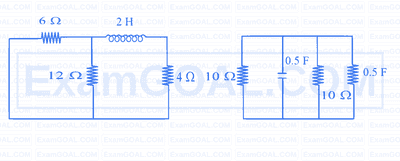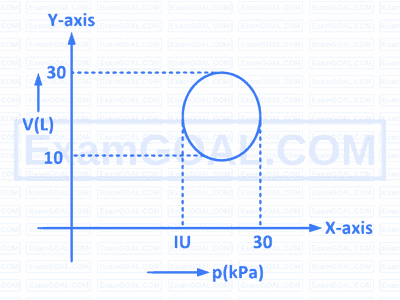1
The domain of the real valued function $f(x)$ $=\log _2 \log _3 \log _5\left(x^2-5 x+11\right)$ is
2
The range of the real valued function $f(x)=\left(\frac{x^2+2 x-15}{2 x^2+13 x+15}\right)$ is
3
$\frac{1}{1 \cdot 5}+\frac{1}{5 \cdot 9}+\frac{1}{9 \cdot 13}+\ldots$. upto $n$ terms $=$
4
If $A=\left|\begin{array}{lll}2 & 3 & 4 \\ 1 & k & 2 \\ 4 & 1 & 5\end{array}\right|$ is singular matrix, then the quadratic equation having the roots $k$ an $\frac{1}{k}$ is
5
Let $A$ be a $4 \times 4$ matrix and $P$ be is adjoint matrix, If $|P|=\left|\frac{A}{2}\right|$ then $\left|A^{-1}\right|$
6
The system $x+2 y+3 z=4,4 x+5 y+3 z=5,3 x+4 y+3 z=\lambda$ is consistent and $3 \lambda=n+100$, then $n=$
7
The complex conjugate of $(4-3 i)(2+3 i)(1+4 i)$ is.
8
If the amplitude of $(z-2)$ is $\frac{\pi}{2}$, then the locus of $z$ is
9
If $\omega$ is the cube root of unity,
$$
\frac{a+b \omega+c \omega^2}{c+a \omega+b \omega^2}+\frac{a+b \omega+c \omega^2}{b+c \omega+b \omega^2}=
$$
10
Roots of the equation $a(b-c) x^2+b(c-a) x+c(a-b)=0$ are
11
If $(3+i)$ is a root of $x^2+a x+b=0$, then $a=$
12
The algebraic equation of degree 4 whose roots are translate of the roots of the equation. $x^4+5 x^3+6 x^2+7 x+9=0$ by -1 is
13
If the roots of the equation $4 x^3-12 x^2+11 x+m=0$ are in arithmetic progression, then $m=$
14
The number of 5 -digit odd numbers greater than 40000 that can be formed by using 3,4,5,6,7,0 so that at least one of its digit must be repeated is
15
The number of ways in which 3 men and 3 women can be arranged in a row of 6 seats, such that the first and last seats must be filled by men is
16
If a committee of 10 members is to be formed from 8 men and 6 women, then the number of different possible committees in which the men are in majority is
17
If the eleventh term in the binomial expansion of $(x+a)^{15}$ is the geometric mean of the eighth and twelfth terms, then the greatest term in the expansion is
18
The sum of the rational terms in the binomial expansion of $\left(\sqrt{2}+3^{1 / 5}\right)^{10}$ is
19
If $\frac{1}{(3 x+1)(x-2)}=\frac{A}{3 x+1}+\frac{B}{x-2}$ and $\frac{x+1}{(3 x+1)(x-2)}=\frac{C}{3 x+1}+\frac{D}{x-2}$, then
20
If the period of the function $f(x)=\frac{\tan 5 x \cos 3 x}{\sin 6 x}$ is $\alpha$, then $f\left(\frac{\alpha}{8}\right)=$
21
If $\sin x+\sin y=\alpha, \cos x+\cos y+\beta$, then $\operatorname{cosec}(x+y)=$
22
If $P+Q+P=\frac{\pi}{4}$, then $\cos \left(\frac{\pi}{8}-P\right)+\cos \left(\frac{\pi}{8}-Q\right)+\cos$ $\left(\frac{\pi}{8}-R\right)=$
23
For $a \in R-\{0\}$, if $a \cos x+a \sin x+a=2 k+1$ has a solution, then $k$ lies in the interval
24
If the general solution .set of $\sin x+3 \sin 3 x+\sin 5 x=1$ is $S$, then $\{\sin \alpha / \alpha \in S\}=$
25
If $\theta$ is an acute angle, $\cosh x=K$ and $\sinh x=\tan \theta$, then $\sin \theta=$
26
In a $\Delta$ if the angles are in the ratio $3: 2: 1$, then the ratio of its sides is
27
In a $\triangle A B C$, if $B C=5, C A=6$ and $A B=7$, then the length of the median drawn from $B$ onto $A C$ is
28
In $\triangle A B C$, if $A B: B C: C A=6: 4: 5$, then $R: r$ is equal to
30
$\mathbf{c}$ is a vector along the bisector of the internal angle between the vectors $\mathbf{a}=4 \hat{\mathbf{i}}+7 \hat{\mathbf{j}}-4 \hat{\mathbf{k}}$ and $\mathbf{b}=12 \hat{\mathbf{i}}-3 \hat{\mathbf{j}}+4 \hat{\mathbf{k}}$. If the magnitude of $\mathbf{c}$ is $3 \sqrt{13}$, then c=
31
$\mathbf{a}=\hat{\mathbf{i}}-\hat{\mathbf{j}}+\hat{\mathbf{k}}, \mathbf{b}=2 \hat{\mathbf{i}}+\hat{\mathbf{j}}+\hat{\mathbf{k}}$ are two vectors and $\mathbf{c}$ is a unit vectors lying in the plane of $\mathbf{a}$ and $\mathbf{b}$. If $\mathbf{c}$ is perpendicular to $\mathbf{b}$, then $\mathbf{c}(\hat{\mathbf{i}}+\hat{\mathbf{j}}+2 \hat{\mathbf{k}})=$
32
$A(1,2,1), B(2,3,2), C(3,1,3)$ and $D(2,1,3)$ are the vertices of a tetrahedron. If $\theta$ is the angle between the faces $A B C$ and $A B D$, then $\cos \theta=$
33
If $\mathbf{a}=\hat{\mathbf{i}}-\hat{\mathbf{j}}+\hat{\mathbf{k}}, \mathbf{b}=\hat{\mathbf{i}}+\hat{\mathbf{j}}-2 \hat{\mathbf{k}}, \mathbf{c}=2 \hat{\mathbf{i}}-3 \hat{\mathbf{j}}-\hat{\mathbf{k}}$. $\mathbf{d}=2 \hat{\mathbf{i}}+\hat{\mathbf{j}}+\hat{\mathbf{k}}$ are four vector, then $(\mathbf{a} \times \mathbf{c}) \times(\mathbf{b} \times \mathbf{d})=$
34
Mean deviation about the mean for the following data is
$$ \begin{array}{llllll} \hline \text { Class Interval } & 0-6 & 6-12 & 12-18 & 18-24 & 24-30 \\ \hline \text { Frequency } & 1 & \,2 & \,3 & \,2 & \,1 \\ \hline \end{array} $$
35
If 12 dice are thrown at a time, then the probability that a multiple of 3 does not appear on any dice is
36
If a number is drawn at random from the set $\{1,3,5,7, \ldots . .59\}$, then the probability that it lies in the interval in which the function $f(x)=x^3-16 x^2+20 x-5$ is stricly decreasing is
37
In a class consisting of 40 boys and 30 girls. $30 \%$ of the boy and $40 \%$ of the girls are good at Mathematics. If a student selected at random from that class is found to be a girl, then the probability that she is not good at Mathematics is
38
A basket contains 12 apples in which 3 are rotten. If 3 apples are drawn at random simultaneously from it, then the probability of getting atmost one rotten apple is
39
7 coins are tossed simultaneously and the number of heads turned up is denoted by random variable $X$. If $\mu$ is the mean and $\sigma^2$ is the variance of $X$, then $\frac{\mu \sigma^2}{P(X=3)}=$
40
A manufacturing company noticed that $1 \%$ of its products are defective. If a dealer order for 300 items from this company, then the probability that the number of defective items is atmost one is
41
$P$ is a variable point such that the distance of $P$ from $A$ $(4,0)$ is twice the distance of $P$ from $B(-4,0)$. If the line $3 y-3 x-20=0$ intersects the locus of $P$ at the points $C$ and $D$, then the distance between $C$ and $D$ is
42
When the origin is shifted to $(h, k)$ by translation of axes, the transformed equation of $x^2+2 x+2 y-7=0$ does not contain $x$ term and constant term. Then, $(2 h+k)=$
43
Let $\alpha \in R$. If the line $(\alpha+1) x+\alpha y+\alpha=1$ passes through a fixed point $(h, k)$ for all $\alpha$, then $h^2+k^2=$
44
If $(\alpha, \beta)$ is the orthocentre of the triangle with the vertices $(2,2),(5,1),(4,4)$, then $\alpha+\beta=$
45
The area of the triangle formed by the lines represented by $3 x+y+15=0$ and $3 x^2+12 x y-13 y^2=0$ is
46
If all chords of the curve $2 x^2-y^2+3 x+2 y=0$, which subtend a right angle at the origin always passing through the point $(\alpha, \beta)$, then $(\alpha, \beta)=$
47
$2 x-3 y+1=0$ and $4 x-5 y-1=0$ are the equations of two diameters of the circle $S \equiv x^2+y^2+2 g x+2 f y-11=0 . Q$ and $R$ are the points of contact of the tangents drawn from the point $P(-2,-2)$ to this circle. If $C$ is the centre of the circle $S=0$, then the area (in square units ) of the quadrilateral $P Q C R$ is
48
If the inverse point of the point $(-1,1)$ with respect to the circle $x^2+y^2-2 x+2 y-1=0$ is $(p, q)$, then $p^2+q^2=$
49
If $(a, b)$ is the mid-point of the chord $2 x-y+3=0$ of the circle $x^2+y^2+6 x-4 y+4=0$, then $2 a+3 b=$
50
If a direct common tangent drawn to the circle $x^2+y^2-6 x+4 y+9=0$ and $x^2+y^2+2 x-2 y+1=0$ touches the circles at $A$ and $B$, then $A B=$
51
The radius of the circle which cuts the circles $x^2+y^2-4 x-4 y+7=0, x^2+y^2+4 x-4 y+6=0$ and $x^2+y^2+4 x+4 y+5=0$ orthogonally is
52
The equation of the normal drawn to the parabola $y^2=6 x$ at the point $(24,12)$ is
53
If $A_1, A_2, A_3$ are the areas of ellipse $x^2+4 y^2-4=0$ its director circle and auxiliary circle respectively, then $A_2+A_3-A_1=$
54
The equation of the pair of asymptotes of the hyperbola $4 x^2-9 y^2-24 x-36 y-36=0$ is
55
The equation of one of the tangents drawn from the point $(0,1)$ to the hyperbola $45 x^2-4 y^2=5$ is
56
Consider the tetrahedron with the vertices $A(3,2,4)$, $B\left(x_1, y_1, 0\right), C\left(x_2, y_2, 0\right)$ and $D\left(x_3, y_3, 0\right)$.If the $\triangle B C D$ is formed by the lines $y=x, x+y=6$ and $y=1$, then the centroid of the tetrahedron is
57
If $P(2, \beta, \alpha)$ lies on the plane $x+2 y-z-2=0$ and $Q(\alpha,-1, \beta)$ lies on the plane $2 x-y+3 z+6=0$, then the direction cosines of the $P Q$ are
58
Let $\pi$ be the plane that passes through the point $(-2,1,-1)$ and parallel to the plane $2 x-y+2 z=0$. Then the foot of perpendicular drawn from the point $(1,2,1)$ to the plane $\pi$ is
59
If $f(x)=\frac{5 x \cdot \operatorname{cosec}(\sqrt{x})-1}{(x-2) \operatorname{cosec}(\sqrt{x})}$, then $\lim \limits_{x \rightarrow \infty} f\left(x^2\right)=$
60
$\lim \limits_{x \rightarrow 2} \frac{\sqrt{1+4 x}-\sqrt{3+3 x}}{x^3-8}=$
61
If
$$
\lim _{x \rightarrow \infty} \frac{(\sqrt{2 x+1}+\sqrt{2 x-1})^8+(\sqrt{2 x+1}-\sqrt{2 x-1})^8\left(P x^4-16\right)}{\left(x+\sqrt{x^2-2}\right)^8+\left(x-\sqrt{x^2-2}\right)^8}=1
$$
then $P=$
62
The rate of change of $x^{\sin x}$ with respect to $(\sin x)^x$ is
63
If $y=\frac{\alpha x+\beta}{\gamma \alpha+\delta}$, then $2 y_1 y_3=$
64
Which one of the following is false ?
65
The point which lies on the tangent drawn to the curve $x^4 e^y+2 \sqrt{y+1}=3$ at the point $(1,0)$ is
66
If $f(x)=x^x$, then the interval in which $f(x)$ decrease is
67
If the Rolle's theorem is applicable for the function $f(x)$ defined by $f(x)=x^3+P x-12$ on $[0,1]$ then the value of $C$ of the Rolle's theorem is
68
The number of all the value of $x$ for which the function $f(x)=\sin x+\frac{1-\tan ^2 x}{1+\tan ^2 x}$ attains it maximum value on [ $0.2 \pi$ ] is
69
If $x \in\left[2 n \pi-\frac{\pi}{4}, 2 n \pi+\frac{3 \pi}{4}\right]$ and $n \in Z$, then $\int \sqrt{1-\sin 2 x} d x=$
70
$\int e^x\left(\frac{x+2}{x+4}\right)^2 d x=$
71
If $\int \frac{1}{1-\cos x} d x=\tan \left(\frac{x}{\alpha}+\beta\right)+c$, then one of the values of $\frac{\pi \alpha}{4}-\beta$ is
72
If $729 \int_1^3 \frac{1}{x^3\left(x^2+9\right)^2} d x=a+\log b$, then $(a-b)=$
73
If $n \geq 2$ is a natural number and $0<\theta<\frac{\pi}{2}$, then $\int \frac{\left(\cos ^n \theta-\cos \theta\right)^{1 / n}}{\cos ^{n+1} \theta} \sin \theta d \theta=$
74
$\lim \limits_{n \rightarrow \infty} \frac{1^{17}+2^{77}+\ldots+n^{77}}{n^{78}}=$
75
$$ \text { If } f(x)=\left\{\begin{array}{cc} \frac{6 x^2+1}{4 x^3+2 x+3} & , 0 < x < 1 \\ x^2+1 & , 1 \leq x < 2 \end{array} \text {, then } \int_0^2 f(x) d x=\right. $$
76
If $\int_1^n[x] d x=120$, then $n=$
77
The area of the region under the curve $y=|\sin -\cos x|$, $0 \leq x \leq \frac{n}{2}$ and above $X$-axis, is (in sq units)
78
The differential equation formed by eliminating $a$ and $b$ from the equation $y=a e^{2 x}+b x e^{2 x}$ is
79
If $y=a^3 e^{y^2 x+c}$ is the general solution of a differential equation, where $a$ and $c$ are arbitrary constants and $b$ is fixed constant, then the order of differential equation is
80
The solution of differential equation $\left(x+2 y^3\right) \frac{d y}{d x}=y$ ls






